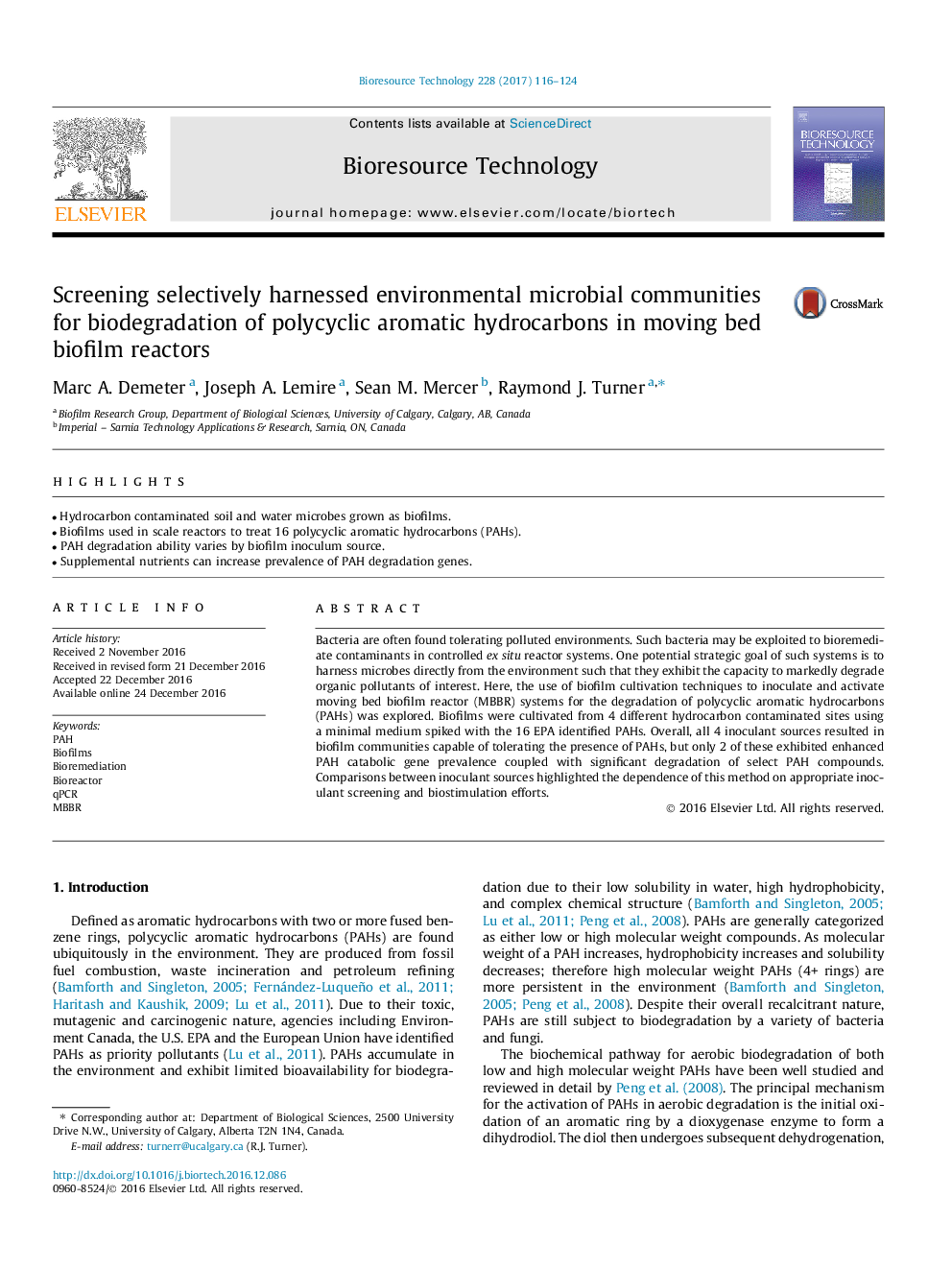| Article ID | Journal | Published Year | Pages | File Type |
|---|---|---|---|---|
| 4997728 | Bioresource Technology | 2017 | 9 Pages |
Abstract
Bacteria are often found tolerating polluted environments. Such bacteria may be exploited to bioremediate contaminants in controlled ex situ reactor systems. One potential strategic goal of such systems is to harness microbes directly from the environment such that they exhibit the capacity to markedly degrade organic pollutants of interest. Here, the use of biofilm cultivation techniques to inoculate and activate moving bed biofilm reactor (MBBR) systems for the degradation of polycyclic aromatic hydrocarbons (PAHs) was explored. Biofilms were cultivated from 4 different hydrocarbon contaminated sites using a minimal medium spiked with the 16 EPA identified PAHs. Overall, all 4 inoculant sources resulted in biofilm communities capable of tolerating the presence of PAHs, but only 2 of these exhibited enhanced PAH catabolic gene prevalence coupled with significant degradation of select PAH compounds. Comparisons between inoculant sources highlighted the dependence of this method on appropriate inoculant screening and biostimulation efforts.
Related Topics
Physical Sciences and Engineering
Chemical Engineering
Process Chemistry and Technology
Authors
Marc A. Demeter, Joseph A. Lemire, Sean M. Mercer, Raymond J. Turner,
